Embarking on the journey of mountain trekking can indeed feel like a huge challenge. Figuring out various techniques, building up stamina or even deciding what to pack, all these factors might make you pause and reconsider your decision.
Trust me! I’ve had my fair share of uncertainties too. But aren’t we all in this together? With over 41 million fellow Americans annually exploring the joy of hiking as per an Outdoor Foundation report, each one with their unique starting point.
This piece is intended to smooth your transition into mountain trekking by acquainting you with 13 game-changing tips that were handed down from seasoned professionals in this field.
So, let’s lace up those hiking boots for an extraordinary adventure as we tread the less explored trails collectively.@.
Key Takeaways
- Building endurance through training and weightlifting can boost your stamina for mountain trekking.
- Prepare your gear in advance, including a good pair of hiking boots, appropriate clothing, and checking all equipment before leaving home.
- Practice efficient packing techniques by laying out all your gear before packing, using waterproof pouches for important items, making a list of essential gear, and packing quickly and with ease.
- Maintain a steady pace and rhythm while trekking, mix up your stride to adjust to different terrains, use breathing techniques to improve endurance, and try the “rest step” method to conserve energy during climbs.
- Descend safely by maintaining a low center of gravity, using proper foot placement to prevent slipping or tripping, and utilizing trekking poles for added support.
- Hiking with a weighted pack helps train your body for carrying heavy backpacks on the trail.
- Break in your gear before trekking by wearing boots beforehand, adjusting backpack straps properly, practicing with trekking poles,
Get ready faster
To get ready faster for mountain trekking, focus on building endurance, preparing your gear in advance, and practicing efficient packing techniques.
Build endurance
To enjoy hiking, you need to build endurance. Training a lot can boost your stamina for mountain trekking. Try running or walking more. It will make your hikes easier and fun! Weight lifting helps too.
Using less gear also adds to your longevity on the trail. If you lose weight, it further boosts your fatigue resistance. All these steps improve aerobic capacity, muscle power, and fitness for the great outdoors!
Prepare gear in advance
Getting your gear ready ahead of time is a big part of going on a trek. Here’s how to do it:
- Get a good pair of hiking boots or trail runners. Your feet will thank you. Make sure they fit well to avoid blisters.
- Pack workout clothes that wick away sweat. You’ll feel better on the trail.
- Put on long pants or tights to protect your legs from scratches and bites.
- Check all your gear before you leave home. Make sure nothing is broken or missing.
- If you’re new to hiking, talk to a doctor first. They can help make sure you’re healthy enough for this kind of activity.
- Start slow with your training and build up over time. This helps your body get used to the work it will be doing in the mountains.
Practice packing efficiently
Getting ready faster can be a game-changer in mountain trekking. Here are some ways to practice packing efficiently:
- Lay out all your gear before you start packing. This way, you make sure you don’t miss anything.
- Waterproof pouches are a trekker’s best friend. Use them for storing your important items like maps or snacks.
- Make a list of essential gear for trekking. Check each item off the list as you pack it.
- Try different methods of packing until you find what works for you. This may include rolling clothes or using packing cubes.
- Train yourself to pack quickly and with ease. It won’t come at once but will improve with time and practice.
- Follow the basic principles of efficient packing: lightest items go at the bottom, heaviest in the middle, and frequently used on top.
- Always check your gear after packing to ensure nothing is left behind.
Pace yourself
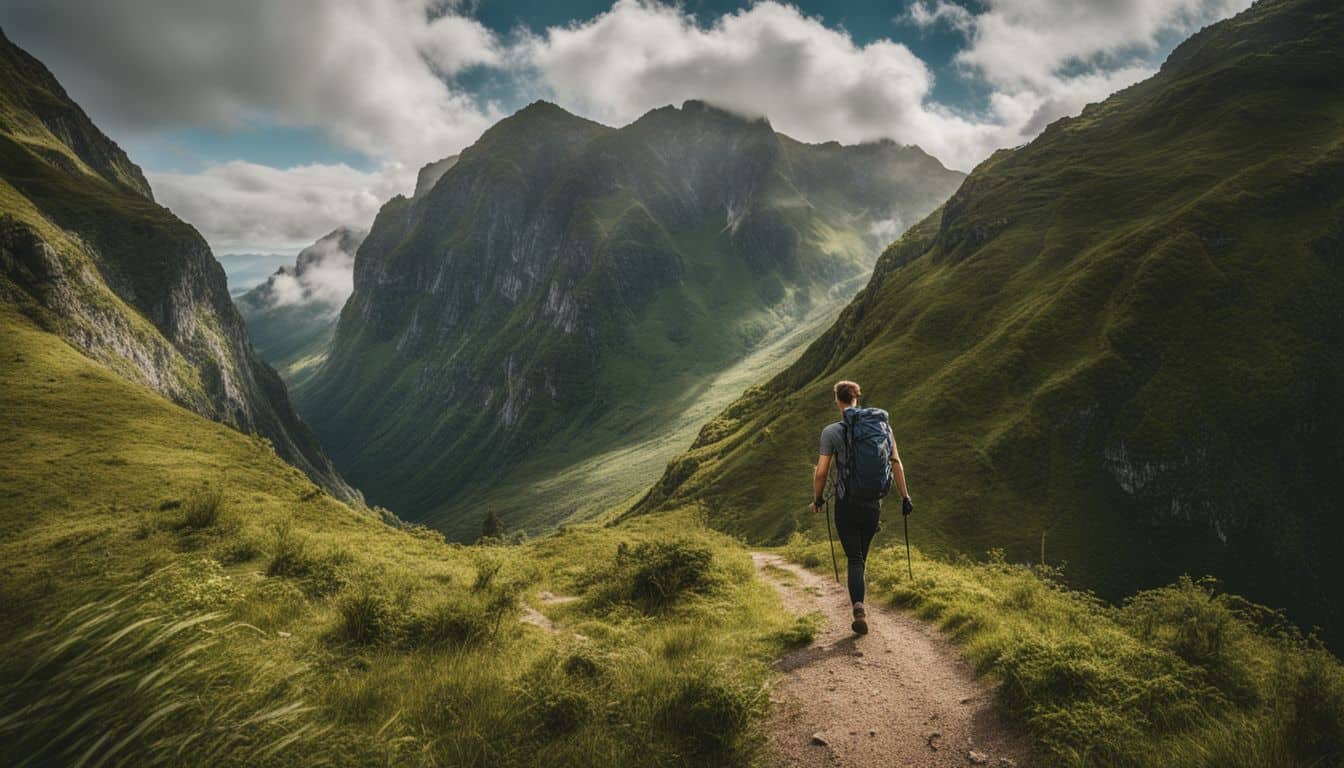
Maintain a steady pace and rhythm, mix up your stride, use breathing techniques, and explore the “rest step” method for optimal mountain trekking.
Maintain a steady pace and rhythm
Maintaining a steady pace and rhythm is crucial for a successful mountain trekking experience. It’s important to find a comfortable pace at the beginning of your hike and adjust it accordingly as you progress.
Walking sticks or poles can be helpful in establishing and maintaining a healthy pace, particularly when you’re descending. Keep in mind that your hiking pace may need to change based on factors such as weather conditions, terrain difficulty, your physical fitness level, and the gear you’re using.
Remember to breathe smoothly and in rhythm with your steps to set the tempo of your hike.
Mix up your stride
When it comes to mountain trekking, mixing up your stride is an important technique to master. By varying the length and pace of your steps, you can adjust to different terrains and conditions.
This helps prevent fatigue and reduces the risk of injury. Remember, each step should be deliberate and purposeful, focusing on maintaining a steady rhythm throughout the hike. By adapting your stride based on the trail’s incline, obstacles, or weather conditions, you’ll find a comfortable footfall that allows for efficient movement while conserving energy.
So don’t be afraid to mix it up and find what works best for you!
Use breathing techniques
Breathing techniques are crucial when it comes to mountain trekking. They can help improve your endurance and overall performance. One effective technique is belly breathing, also known as diaphragmatic breathing.
This involves taking deep breaths through your nose and filling your abdomen with air, rather than just shallow chest breaths. Another useful technique for altitude hiking is pressure breathing, where you exhale forcefully through pursed lips to help maintain a steady flow of oxygen.
By practicing these breathing methods while hiking, you can enhance your ability to breathe efficiently and increase your stamina on the trail. So remember to focus on your breath and use these techniques during your next mountain trekking adventure!
Explore the “rest step” method
When mountain trekking, one technique that can help conserve energy is the “rest step” method. This method involves placing one foot uphill while locking the knee of the lower leg and supporting all body weight on this leg.
By doing so, you can rest your body weight onto your skeletal frame, reducing strain on your muscles. The aim of the rest step is to distribute your body weight more effectively, allowing you to conserve energy and maintain a steady pace during long climbs.
It’s important to practice this technique with a shorter than normal walking gait for maximum efficiency. So next time you’re out hiking or mountain climbing, give the rest step method a try and experience its benefits firsthand!
Descend safely and efficiently
Maintain a low center of gravity as you descend, focusing on keeping your weight balanced and stable.
Maintain a low center of gravity
When descending a mountain while trekking, it is important to maintain a low center of gravity. This means that your body’s balance should be over your legs, neither leaning forward nor backward.
By aligning your center of gravity with the direction you want to move, you can stay stable and balanced. Leaning backward should be avoided as it can throw off your balance and make descending more difficult.
Keeping a low center of gravity is crucial for efficient and safe movement when going downhill on a trek. Remember to focus on stability and body alignment to have a successful descent.
Use proper foot placement
Proper foot placement is essential when descending during mountain trekking. It helps you stay safe and efficient on the trail. To achieve this, avoid dragging your feet and take small steps instead.
This allows you to maintain control and prevent tripping or slipping. Remember, it’s important not to arrest speed while descending. Using two trekking poles can also provide extra support and stability.
So, pay attention to your foot placement and make sure each step is deliberate and secure for a successful mountain trekking experience.
Utilize trekking poles
Trekking poles are a valuable tool that can make your mountain trekking experience safer and more efficient. These sturdy walking sticks provide support, making it easier to descend steep slopes and navigate uneven terrain.
They also help protect your joints by reducing strain on the knees and ankles. In fact, a study from 1999 found that using trekking poles can decrease knee strain by up to 25%. Additionally, when going uphill, you can engage your upper body muscles by pushing off with the poles.
This not only helps with balance but also provides extra power and stability. So don’t forget to bring along your trusty trekking poles on your next hiking adventure!
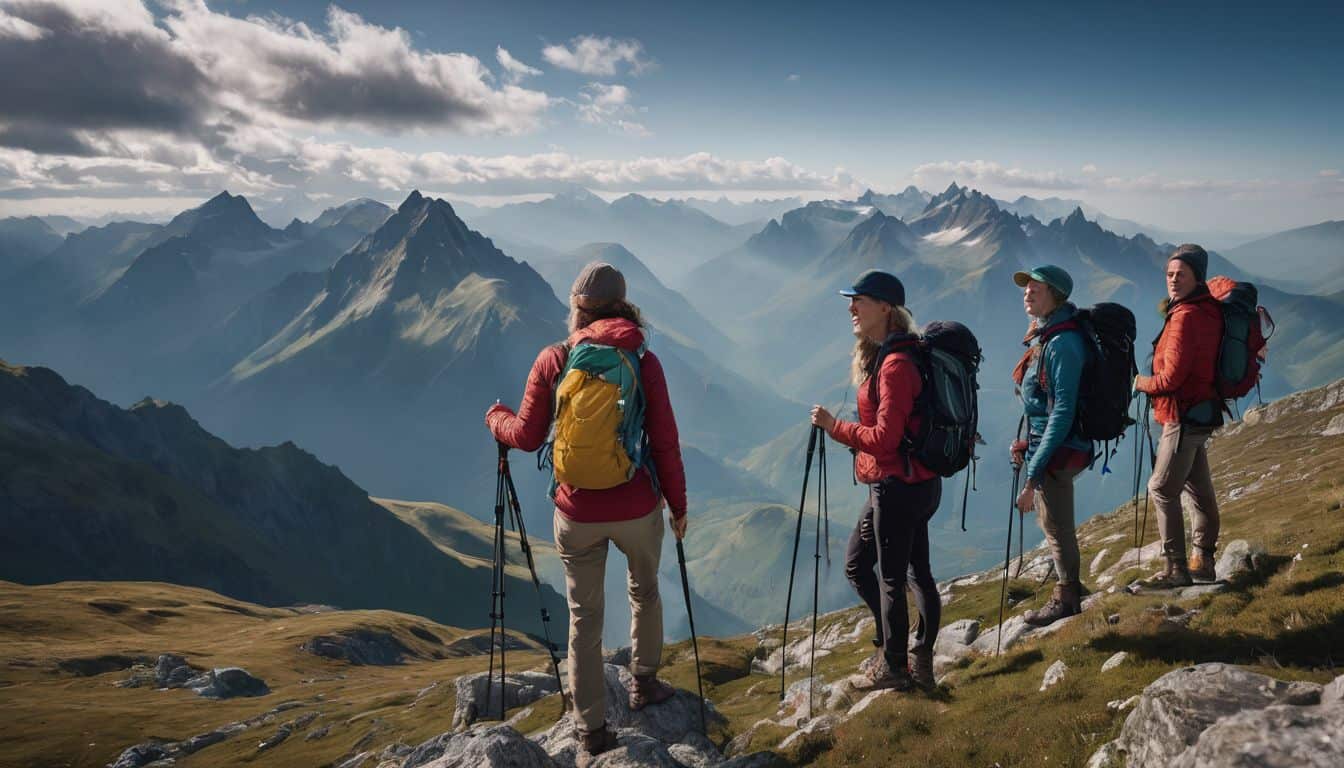
Comprehensive Guide to Mountain Trekking Techniques
I’m excited to share with you a comprehensive guide to mountain trekking techniques. This guide is packed with valuable tips that will help you succeed in your hiking adventures. From staying calm and relaxed on a mountain bike to maintaining a steady pace and rhythm, this guide covers it all.
One important aspect of mountain trekking is learning how to breathe properly. By practicing breathing exercises, you can stay focused and energized throughout your hike. It’s also essential to explore different hiking strategies, such as mixing up your stride and using the “rest step” method, which can help conserve energy and prevent fatigue.
Preparation is key when it comes to mountain trekking. Make sure you’re physically fit by building endurance before embarking on your hike. Additionally, take the time to pack efficiently and break-in your gear beforehand for optimal comfort during your trip.
For beginners, this guide offers specific tips on hiking safely and smartly. By doing thorough research on trail conditions, planning your route accordingly, and understanding potential hazards or wildlife encounters, you’ll be well-prepared for any situation that may arise.
Remember that hiking with friends or family not only adds joy but also enhances safety. There’s strength in numbers when exploring the mountains!
Lastly, always remember to leave no trace while enjoying nature’s beauty. Respect the environment and wildlife by properly disposing of waste and following trail etiquette guidelines.
With this comprehensive guide in hand, I hope you feel confident enough to embark on an unforgettable mountain trekking adventure! Happy hiking!
Hike with a weighted pack
Hiking with a weighted pack is an important training technique for mountain trekking. It helps prepare your body for the physical demands of carrying a heavy backpack on the trail.
By wearing a weighted vest or filling your backpack with weights, you can simulate the weight you’ll be carrying during your trek. This type of training improves your strength and endurance, making it easier to handle the challenges of hiking uphill and navigating uneven terrain.
You can even practice walking on balance beams or navigating rock fields with a weighted pack to improve your balance and stability. So don’t forget to include this type of training in your preparation for mountain trekking!
Break-in your gear
Breaking in your gear is crucial for a successful mountain trek. Here are some important tips to break in your gear properly:
- Wear your hiking boots before the trek to shape them to your feet.
- Choose hiking boots that provide excellent support to minimize fatigue and discomfort.
- Break in your backpack by adjusting the straps and ensuring a proper fit.
- Use your trekking poles before the hike to get used to their weight and functionality.
- Test out your clothing and gear by going on shorter hikes or walks before tackling longer treks.
- Gradually increase the weight of your backpack to acclimate your body to carrying heavier loads.
- Take the time to familiarize yourself with all the functions and features of your gear.
Take breaks
Listen to your body’s signals and rest and refuel regularly during your mountain trekking adventure.
Listen to your body’s signals
During mountain trekking, it’s important to pay attention to your body’s signals. Your body knows when it needs a break or rest, so listen carefully. If you start feeling tired or fatigued, it may be time to take a break and recharge.
By restin regularly, you can prevent exhaustion and ensure that you have enough stamina for the entire hike. Remember that hiking is all about enjoying the experience while taking care of your body at the same time.
So, trust your instincts and give yourself the breaks you need along the way!
Rest and refuel regularly
Rest and refueling regularly are crucial aspects of successful mountain trekking. Taking breaks throughout your hike allows you to rest, regain energy, and prevent exhaustion. It’s important to listen to your body’s signals and take short breaks when needed, especially during intense sections of the trail.
These breaks can be used for a quick snack, hydrating, adjusting clothing layers or gear, and simply giving yourself a moment to relax and enjoy the scenery. By planning appropriate rest intervals based on the intensity of your hike, you can ensure that you maintain stamina throughout your journey.
Remembering to refuel with high-energy snacks and staying hydrated will help keep your energy levels up as well. So make sure to incorporate regular break times into your hiking routine – it might just be the secret to a successful trek!
Hike with friends and family
Hiking with friends and family is not only a fun way to enjoy the outdoors, but it also provides many benefits.
Benefits of hiking with a group
Hiking with a group has many benefits. It can make the trek easier because you can share the load with others. It also creates lasting memories when you hike with friends and family. Being in a group while hiking can provide emotional and mental relief. It helps build a sense of community and provides social support. Spending time in nature with loved ones has a positive effect on overall well-being. Sharing stories and experiences within a community of hikers fosters understanding and self-awareness.
Safety in numbers
Hiking with friends or family members is the best way to stay safe on the trail. When you hike in a group, there are more people to watch out for each other and lend a helping hand if needed.
Additionally, hiking with a group of four or more competent hikers is considered the safest option. Remember, hiking alone should be avoided, and having at least four people in your group is ideal for added safety.
By hiking with others, you can enjoy the outdoors together while minimizing potential risks and ensuring a fun and secure adventure.
Do your research
Research the trail conditions, difficulty level, and potential hazards before embarking on a mountain trekking adventure.
Know the trail conditions and difficulty
Knowing the trail conditions is crucial for a successful mountain trekking experience. Here are some important tips to help you know the trail conditions and difficulty:
- Research the trail: Before embarking on a hike, it’s essential to research the trail thoroughly. Look for recent updates and reviews from other hikers to get an idea of what to expect.
- Check trail conditions: Keep an eye on weather reports and local hiking websites or forums for any updates on trail conditions. This will help you determine if there are any unexpected obstacles like snow blocking your path.
- Understand the difficulty: Take the time to understand the difficulty level of the hike. Look for information regarding elevation gain, steepness, and overall terrain difficulty. This knowledge will allow you to prepare physically and mentally for the challenge ahead.
- Plan accordingly: Once you have gathered information about the trail conditions and difficulty, plan your route and timing accordingly. Knowing these factors will help you estimate how long it may take to complete the hike and allow for proper preparation.
Plan your route and timing accordingly
To have a successful mountain trek, it’s important to plan your route and timing carefully. Here are some tips to help you with this:
- Research routes using guidebooks and online resources.
- Consider factors such as length, difficulty level, elevation, and terrain when planning your route.
- Look at maps or brochures to find parking locations and restroom facilities along your trekking route.
- Understand the weather conditions in the area and season for which you are planning your trek.
- Keep a journal to track your hikes and training details, including weekly mileage and elevation gain.
- Prioritize doing your research and homework before embarking on a mountain trek for a successful and safe experience.
Understand potential hazards and wildlife encounters
Encountering wild animals during mountain trekking can be both irritating and risky. It’s important to do research and understand the potential dangers before going on a trek. Hiking comes with risks such as encountering wild animals, sudden weather changes, and falling.
This article provides helpful tips for wildlife safety, preventing dangerous encounters, and dealing with animals. It also emphasizes the significance of being aware of natural hazards and making smart decisions while hiking.
Understanding potential hazards and wildlife encounters is key to successful mountain trekking.
Leave no trace
Respect the environment and wildlife, properly dispose of waste, and follow trail etiquette guidelines. Discover how to minimize your impact on nature during your mountain treks. Read More!
Respect the environment and wildlife
Respecting the environment and wildlife is crucial when mountain trekking. It’s important to follow the Leave No Trace principles, which provide guidelines for protecting nature during your adventure.
One of these principles emphasizes respecting wildlife by observing them from a distance and avoiding critical habitat areas. Feeding animals should be avoided as it can harm their health and alter their natural behavior patterns.
By being mindful of our impact on the environment and wildlife, we can contribute to conservation efforts and ensure the preservation of natural habitats for future generations. Let’s enjoy the outdoors responsibly and help maintain a sustainable ecosystem while exploring the mountains!
Properly dispose of waste
When mountain trekking, it’s important to properly dispose of waste to protect the environment and prevent water contamination. Burying human feces is the most effective method, but in certain areas where burying is not possible, solid waste must be packed out.
Cleaning up trash and leftover food is crucial in campsites and rest areas. Remember the principle of “pack it in, pack it out” – all trash, food leftovers, and litter should be taken with you when leaving.
Let’s keep our hiking trails clean and preserve nature for future generations!
Follow trail etiquette guidelines
When hiking, it’s important to follow trail etiquette guidelines to ensure a positive experience for everyone. Here are some key guidelines to keep in mind:
- Respect nature and wildlife: Stay on designated trails and do not disturb or feed animals.
- Properly dispose of waste: Carry out all trash, recyclables, and food waste. Leave no trace behind.
- Yield to others: Uphold the principle of “hikers going uphill have the right of way.” Step aside and allow faster hikers to pass safely.
- Keep noise levels low: Avoid loud conversations and music that can disrupt the peacefulness of nature.
- Leave what you find: Preserve natural objects like rocks, plants, and artifacts for others to enjoy.
- Control your pets: If bringing your furry friend along, keep them on a leash and clean up after them.
- Be considerate of others: Keep a safe distance from other hikers and avoid blocking trails or viewpoints.
Conclusion on Mountain Trekking Techniques
In conclusion, these 13 secret tips for mountain trekking techniques will help you succeed in your outdoor adventures. By following these tips from experienced guides and outdoor professionals, you can improve your endurance, pace yourself effectively, descend safely, and be prepared for any challenges along the way.
Whether you’re a beginner or an experienced hiker, incorporating these techniques into your hiking routine will enhance your skills and make your mountain treks more enjoyable. So get ready faster, stay steady on the trail, and conquer those mountains with confidence!
FAQs on Mountain Trekking Techniques
1. Do I need any experience to go mountain trekking?
No prior experience is required for mountain trekking, but it’s important to start with beginner-level treks and gradually build up skills and fitness.
2. How do I choose the right gear for mountain trekking?
When choosing gear for mountain trekking, consider factors such as weather conditions, terrain, and duration of the trek. Invest in proper hiking boots, layered clothing, a backpack, navigation tools (like a map and compass), and sufficient food and water.
3. What are some safety measures to follow during mountain trekking?
During mountain trekking, ensure you inform someone about your itinerary and estimated return time. Carry necessary safety equipment like a first aid kit, headlamp or flashlight, whistle, emergency shelter (such as a tent or bivvy bag), and extra food and water.
4. Are there any tips for acclimatizing properly during high-altitude treks?
To acclimatize properly during high-altitude treks:
– Gradually ascend rather than abruptly climbing.
– Drink plenty of water to stay hydrated.
– Take rest days to allow your body to adjust.
– Avoid alcohol and caffeine.
– Listen to your body for signs of altitude sickness such as headaches or nausea.
5. How can I prepare physically for mountain trekking?
To prepare physically for mountain trekking:
– Incorporate cardiovascular exercises like walking or jogging into your routine.
– Include strength training exercises targeting legs (like squats) and core muscles (like planks).
– Practice hiking on hilly terrains with increasing distances over time.

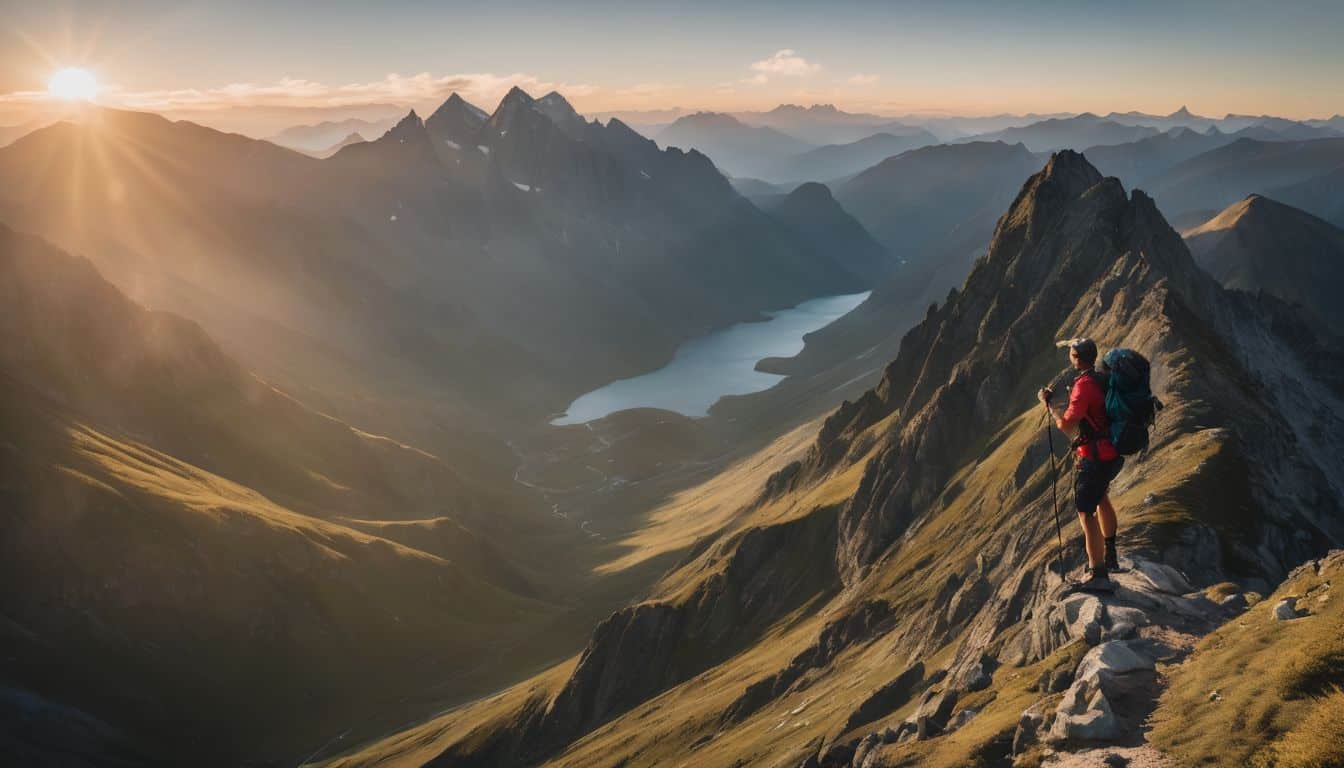
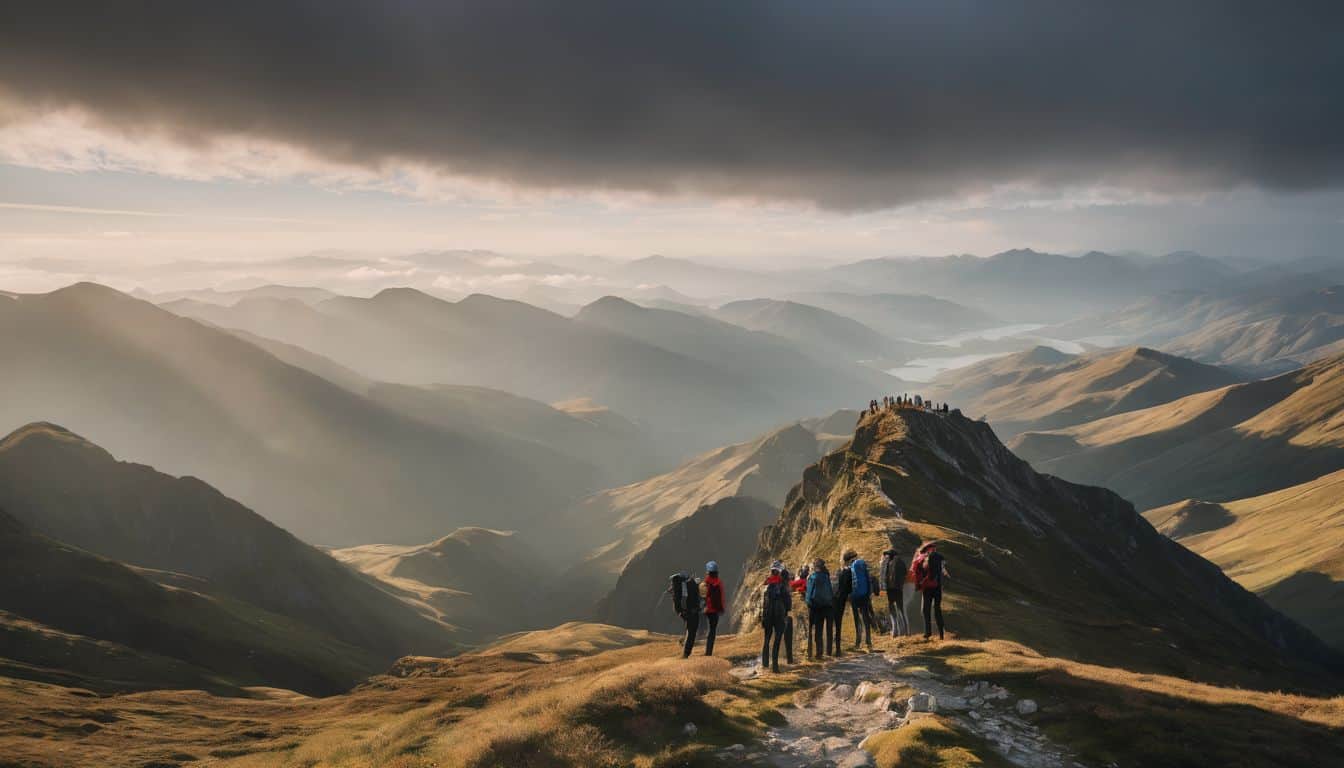
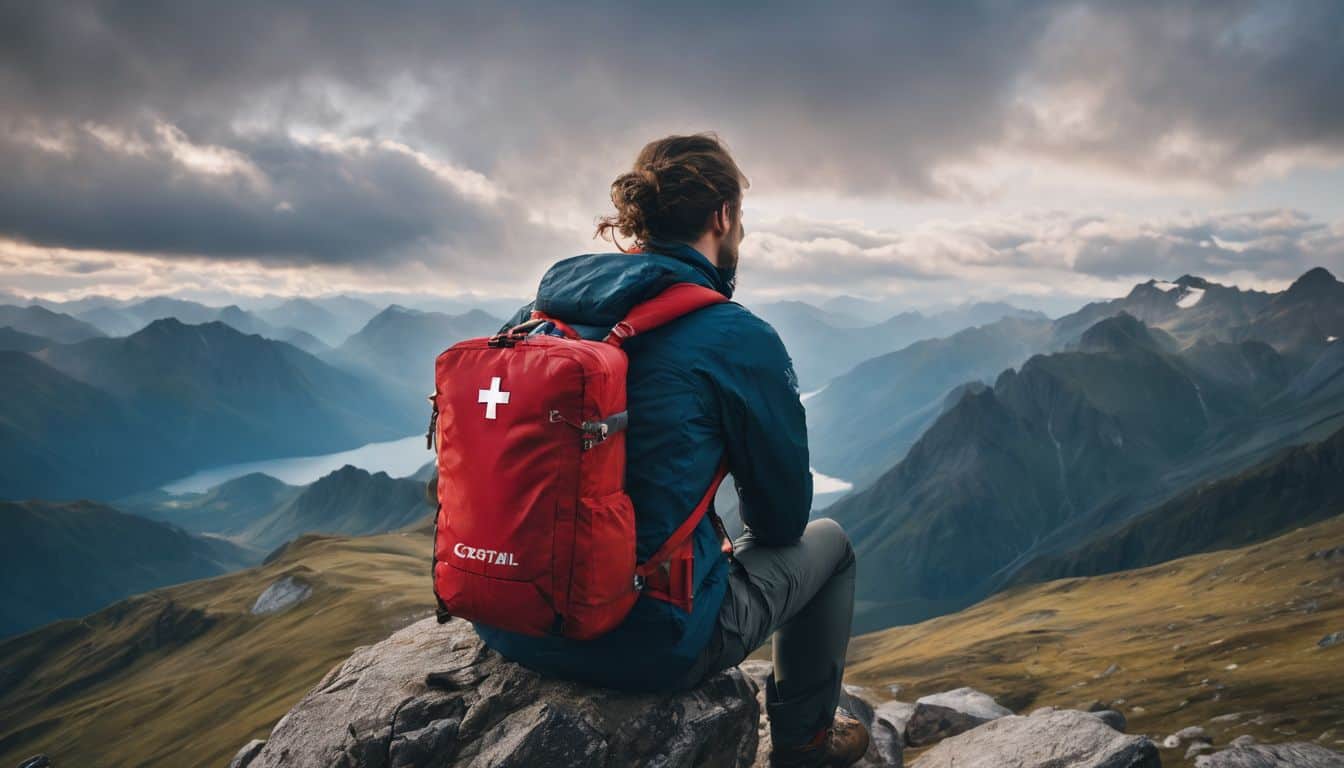
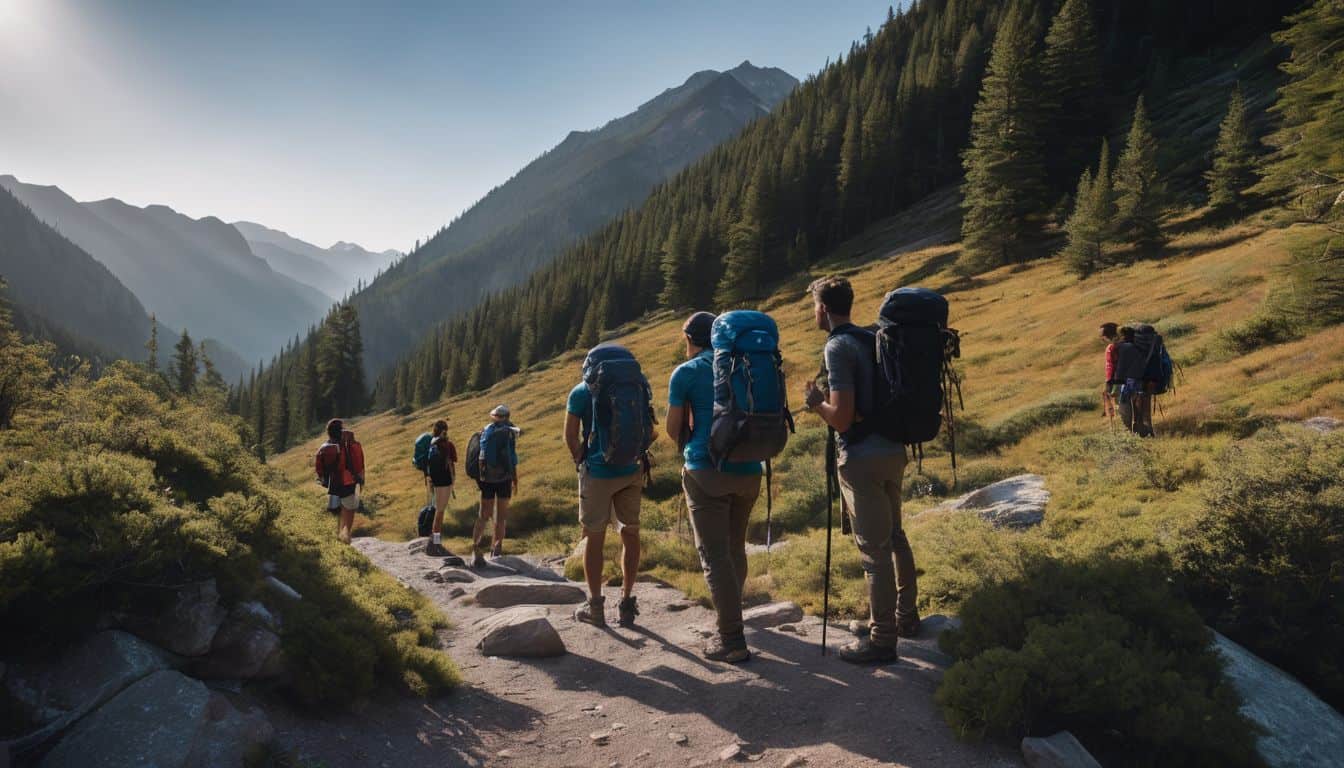
Leave a Reply